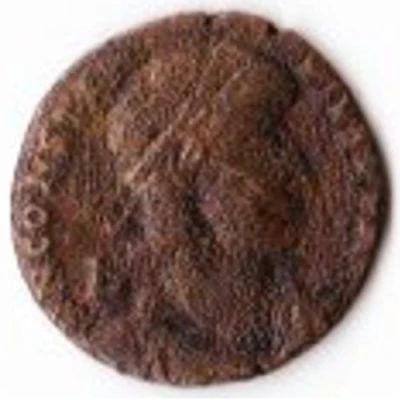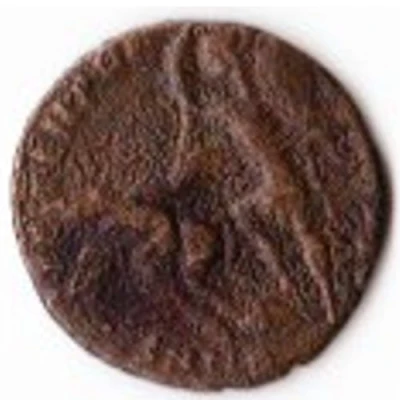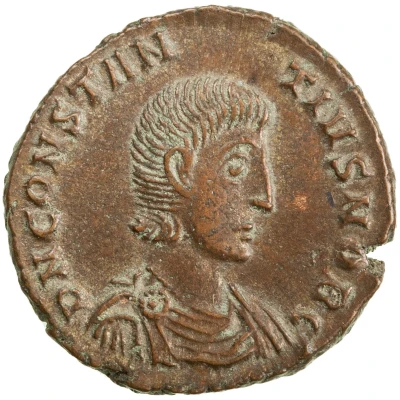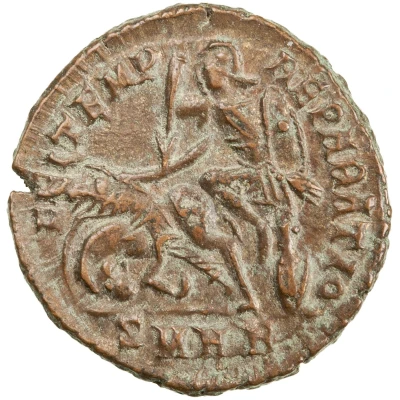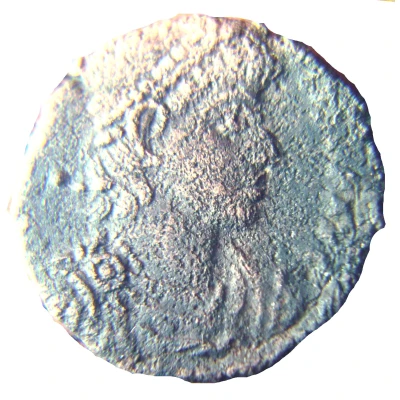
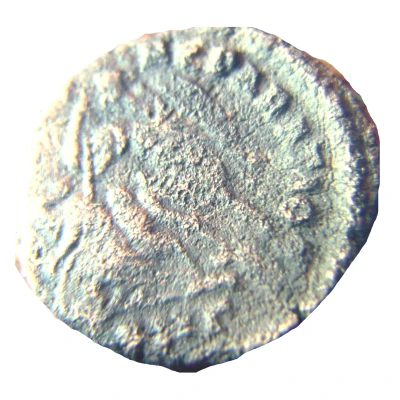

© kommodore_ss
Nummus - Constantius II FEL TEMP REPARATIO; Heraclea
| Bronze | 2.83 g | 16 mm |
| Issuer | Rome › Roman Empire (27 BC - 395 AD) |
|---|---|
| Emperor | Constantius II (337-361) |
| Type | Standard circulation coin |
| Years | 351-355 |
| Value | Nummus (1⁄7200) |
| Currency | Solidus, Reform of Constantine (AD 310/324 – 395) |
| Composition | Bronze |
| Weight | 2.83 g |
| Diameter | 16 mm |
| Shape | Round (irregular) |
| Technique | Hammered |
| Orientation | Variable alignment ↺ |
| Demonetized | Yes |
| Updated | 2024-10-04 |
| Numista | N#62361 |
|---|---|
| Rarity index | 77% |
Reverse
Soldier, helmeted, draped, cuirassed, advancing left, spearing fallen horseman with right hand and wearing shield on left arm; shield on ground to right; horseman wearing pointed cap, facing soldier, extending left arm.
Mintmark and officina in exergue.
Scripts: Latin, Greek
Lettering: FEL TEMP - REPARATIO
Unabridged legend: Felicitas Temporum Reparatio.
Translation: The restoration of happy times.
Edge
Plain
Interesting fact
The Nummus - Constantius II (FEL TEMP REPARATIO; Heraclea) coin was part of a large-scale currency reform implemented by Emperor Constantius II in the 4th century AD. The reform aimed to address the inflation and economic challenges of the Roman Empire by introducing a new standardized system of coinage. The Nummus coin was one of the new denominations introduced during this reform, and it was designed to be a more affordable alternative to the traditional gold and silver coins. Despite its low value, the Nummus coin was still made of bronze, which was a significant improvement over the previous copper coins. This coin is a testament to the Roman Empire's efforts to stabilize its economy and maintain its power during a time of great turmoil.
